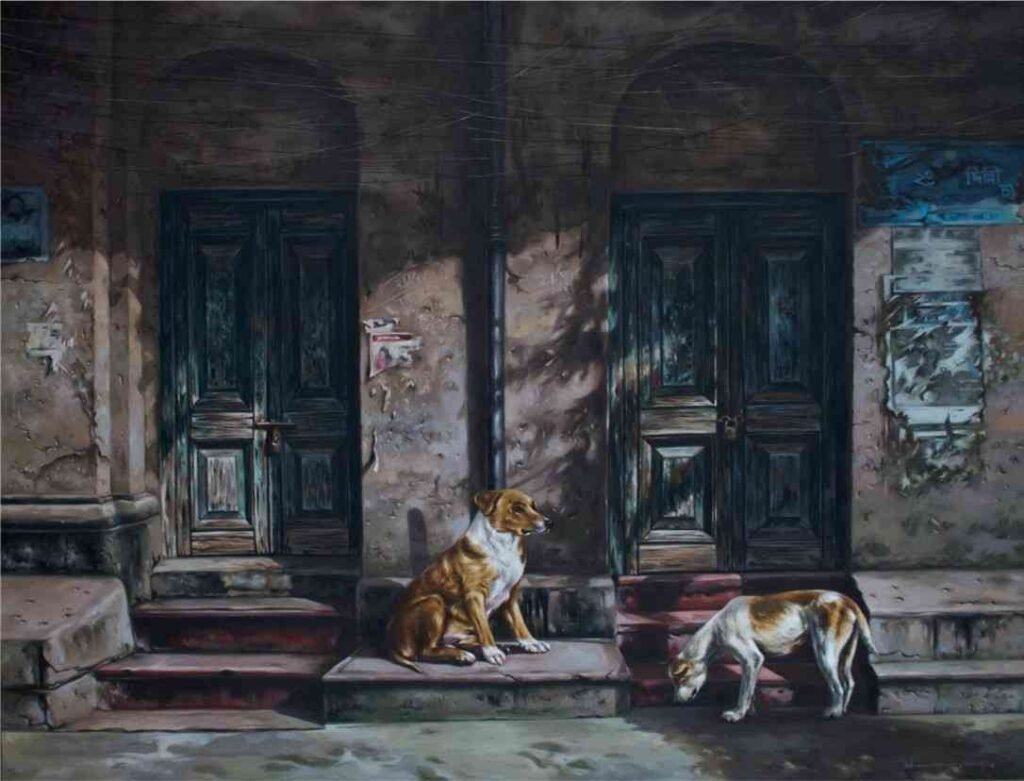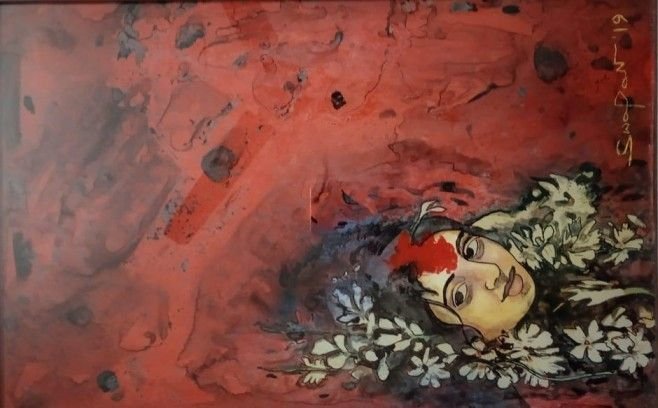Nature has always been a profound source of inspiration for artists throughout history, but its influence is particularly evident in contemporary art. In today’s fast-paced, technology-driven world, many contemporary artists turn to the natural world to find solace, beauty, and meaning. This article explores how nature impacts contemporary artists and delves into the stories behind notable contemporary nature paintings, showcasing the deep connection between art and the environment.
The Allure of Nature
For many contemporary artists, nature is more than just a backdrop; it is a vital component of their creative process. The beauty of landscapes, the intricacies of flora and fauna, and the ever-changing elements of the environment provide endless inspiration. Nature offers a unique perspective on life, urging artists to reflect on their experiences, emotions, and surroundings.
1. A Source of Calm and Reflection
In a world increasingly dominated by urbanization and technology, nature serves as a sanctuary for many artists. The serene beauty of natural settings allows artists to escape the noise and chaos of daily life, fostering a space for introspection and creativity. This calm and reflective environment encourages artists to explore their thoughts and feelings, which often manifest in their work.
2. Environmental Awareness
As concerns about climate change and environmental degradation grow, contemporary artists are using their work to raise awareness about these pressing issues. Nature paintings often serve as a visual commentary on the state of the environment, prompting viewers to reflect on their relationship with nature. By highlighting the beauty of natural landscapes, artists can evoke emotions that inspire action and advocacy for environmental preservation.
Notable Contemporary Nature Paintings
Several contemporary nature paintings exemplify the impact of nature on artists and the stories behind their creation. Here are a few notable examples:

1. “The Clearing” by Julie Mehretu
Julie Mehretu is known for her dynamic, large-scale abstract works that often incorporate elements of nature. In her painting “The Clearing,” Mehretu combines layers of lines, colors, and textures to create a sense of movement reminiscent of natural landscapes. The work reflects her interest in the intersection of geography, history, and the environment, inviting viewers to contemplate the complexities of the world around them.
Impact: Mehretu’s work illustrates how contemporary nature paintings can transcend traditional representations of landscapes, encouraging viewers to engage with nature in a more abstract and conceptual way.
2. “Mountains and Clouds” by Zaria Forman
Zaria Forman is renowned for her stunning pastel drawings that capture the beauty and fragility of the natural world. Her piece “Mountains and Clouds” features breathtaking depictions of mountain ranges and atmospheric elements. Forman’s work is inspired by her travels to remote locations, where she documents the effects of climate change on landscapes.
Impact: Forman’s contemporary nature paintings serve as both a celebration of natural beauty and a stark reminder of the environmental challenges we face. Her work encourages viewers to appreciate the delicate balance of nature and the urgent need for conservation.
3. “Waterfall” by Dan Eldon
Dan Eldon, a contemporary artist and photojournalist, created powerful mixed-media pieces that blend photography, painting, and collage. In his work “Waterfall,” Eldon uses vibrant colors and dynamic textures to evoke the energy and movement of water in nature. This piece captures the essence of the natural world, inviting viewers to connect with the beauty of waterfalls.
Impact: Eldon’s work exemplifies how contemporary nature paintings can convey emotions and sensations associated with the natural environment. His art encourages viewers to appreciate the wonders of nature and the importance of protecting these precious resources.
Techniques and Styles in Contemporary Nature Paintings
Contemporary artists employ various techniques and styles to convey their interpretations of nature. Here are a few approaches commonly seen in contemporary nature paintings:
1. Abstract Representation
Many contemporary artists opt for abstract representation when depicting nature. This approach allows them to focus on colors, shapes, and textures rather than literal representations. Abstract nature paintings invite viewers to interpret the work in their own way, creating a personal connection to the artwork.
2. Mixed Media
Artists often incorporate mixed media in their contemporary nature paintings, combining traditional painting techniques with photography, collage, and other materials. This approach allows for experimentation and innovation, resulting in unique pieces that capture the complexity of nature.
3. Realism and Hyperrealism
While abstraction is prevalent, some contemporary artists embrace realism and hyperrealism in their nature paintings. These artists meticulously capture every detail of their subjects, resulting in stunningly lifelike representations of landscapes, flora, and fauna. This attention to detail often evokes a sense of wonder and appreciation for the beauty of the natural world.
The Role of Nature in Artistic Expression
Nature plays a crucial role in shaping artistic expression, allowing artists to explore themes of beauty, transience, and environmental responsibility. Here’s how nature influences the creative process:
1. Emotional Connection
Artists often draw upon their personal experiences with nature, translating emotions into their work. Whether it’s a serene landscape or a turbulent seascape, nature evokes powerful feelings that artists capture on canvas. This emotional connection resonates with viewers, creating a shared experience that fosters appreciation for the natural world.
2. Storytelling
Many contemporary nature paintings tell stories about the environment and our place within it. Artists use their work to convey messages about conservation, climate change, and the interconnectedness of all living beings. These narratives engage viewers and encourage them to reflect on their relationship with nature.
Conclusion
The impact of nature on contemporary artists is profound and far-reaching. Through their works, artists capture the beauty, fragility, and complexity of the natural world, inviting viewers to engage with their surroundings in new and meaningful ways. Notable contemporary nature paintings serve as a testament to this connection, showcasing the stories and inspirations behind the artwork.
As we continue to face environmental challenges, the role of nature in contemporary art becomes increasingly vital. By appreciating and supporting contemporary nature paintings, we can foster a deeper understanding of our relationship with the environment and inspire positive change. Embrace the beauty of nature through art, and allow it to enrich your life and home.




